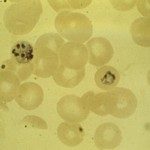Link to Pubmed [PMID] – 20035084
Link to DOI – 10.1161/CIRCRESAHA.109.201665
Circ Res 2010 Feb; 106(3): 495-503
The genes encoding fibroblast growth factor (FGF) 8 and 10 are expressed in the anterior part of the second heart field that constitutes a population of cardiac progenitor cells contributing to the arterial pole of the heart. Previous studies of hypomorphic and conditional Fgf8 mutants show disrupted outflow tract (OFT) and right ventricle (RV) development, whereas Fgf10 mutants do not have detectable OFT defects.Our aim was to investigate functional overlap between Fgf8 and Fgf10 during formation of the arterial pole.We generated mesodermal Fgf8; Fgf10 compound mutants with MesP1Cre. The OFT/RV morphology in these mutants was affected with variable penetrance; however, the incidence of embryos with severely affected OFT/RV morphology was significantly increased in response to decreasing Fgf8 and Fgf10 gene dosage. Fgf8 expression in the pharyngeal arch ectoderm is important for development of the pharyngeal arch arteries and their derivatives. We now show that Fgf8 deletion in the mesoderm alone leads to pharyngeal arch artery phenotypes and that these vascular phenotypes are exacerbated by loss of Fgf10 function in the mesodermal core of the arches.These results show functional overlap of FGF8 and FGF10 signaling from second heart field mesoderm during development of the OFT/RV, and from pharyngeal arch mesoderm during pharyngeal arch artery formation, highlighting the sensitivity of these key aspects of cardiovascular development to FGF dosage.

